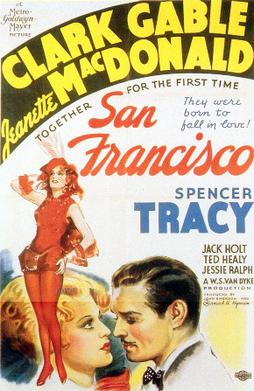
San Francisco is a 1936 American musical-drama disaster film directed by W. S. Van Dyke, based on the April 18, 1906 San Francisco earthquake. The film stars Clark Gable, Jeanette MacDonald and Spencer Tracy. MacDonald's singing helped make this film a major hit, coming on the heels of her other 1936 blockbuster, Rose Marie.
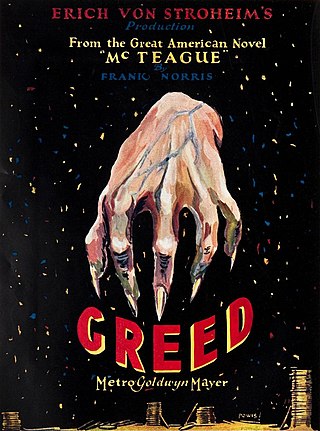
Greed is a 1924 American silent psychological drama film written and directed by Erich von Stroheim and based on the 1899 Frank Norris novel McTeague. It stars Gibson Gowland as Dr. John McTeague; ZaSu Pitts as Trina Sieppe, his wife; and Jean Hersholt as McTeague's friend and eventual enemy Marcus Schouler. The film tells the story of McTeague, a San Francisco dentist, who marries his best friend Schouler's girlfriend Trina.

Betty Compson was an American actress and film producer who got her start during Hollywood's silent era. She is best known for her performances in The Docks of New York and The Barker, the latter of which earned her an Academy Award nomination for Best Actress.

Erich Oswald Hans Carl Maria von Stroheim was an Austrian-American director, screenwriter, actor, and producer, most noted as a film star and avant-garde, visionary director of the silent era. His 1924 film Greed is considered one of the finest and most important films ever made. After clashes with Hollywood studio bosses over budget and workers' rights problems, Stroheim found it difficult to find work as a director and subsequently became a well-respected character actor, particularly in French cinema.

Magic is a 1978 American psychological horror drama film directed by Richard Attenborough and starring Anthony Hopkins, Ann-Margret and Burgess Meredith. The screenplay is by William Goldman, who adapted his novel of the same title. The score was composed by Jerry Goldsmith.
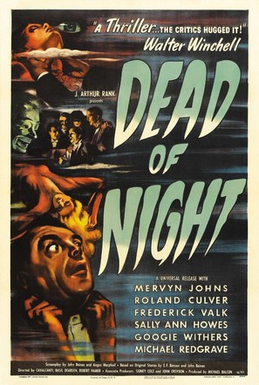
Dead of Night is a 1945 black and white British anthology supernatural horror film, made by Ealing Studios. The individual segments were directed by Alberto Cavalcanti, Charles Crichton, Basil Dearden and Robert Hamer. It stars Mervyn Johns, Googie Withers, Sally Ann Howes and Michael Redgrave. The film is best remembered for the concluding story featuring Redgrave and an insane ventriloquist's malevolent dummy.
The Hully Gully is a type of unstructured line dance often considered to have originated in the 1960s, but is also mentioned some forty years earlier as a dance common in the black juke joints in the first part of the twentieth century. In its modern form it consisted of a series of dance steps called out by the MC. Each step was relatively simple and easy to execute; however, the challenge was to keep up with the speed of each step.
"Caesar and Me" is episode 148 of the American television anthology series The Twilight Zone starring Jackie Cooper as a ventriloquist. It is not to be confused with a similar episode "The Dummy", starring Cliff Robertson as a ventriloquist.

"Krusty Gets Kancelled" is the twenty-second and final episode of the fourth season of the American animated television series The Simpsons. It first aired on the Fox network in the United States on May 13, 1993. In the episode, a new show featuring ventriloquist Arthur Crandall and his dummy Gabbo premieres in Springfield and competes with Krusty the Clown's show. Krusty's show is soon canceled. Bart and Lisa decide to help Krusty get back on the air by staging a comeback special.
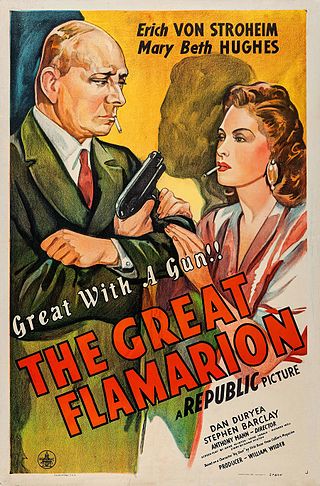
The Great Flamarion is a 1945 American film noir mystery film directed by Anthony Mann starring Erich von Stroheim and Mary Beth Hughes. The film, like many films noir, is shot in flashback narrative. The film was produced by Republic Pictures.
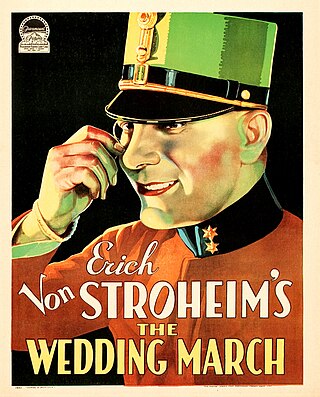
The Wedding March is a 1928 American synchronized sound romantic drama film written and directed by Erich von Stroheim. While the film has no audible dialog, it was released with a synchronized musical score with sound effects using both the sound-on-disc and sound-on-film process. The film stars Erich von Stroheim, Fay Wray and ZaSu Pitts. Paramount Pictures forced von Stroheim to create two films from the footage, the second being The Honeymoon. The Honeymoon is now considered lost, the only known copy destroyed in a fire in France in 1959.

James Cruze was a silent film actor and film director.
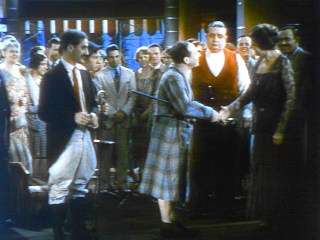
Multicolor is a subtractive two-color motion picture process. Multicolor, introduced to the motion picture industry in 1929, was based on the earlier Prizma Color process, and was the forerunner of Cinecolor.
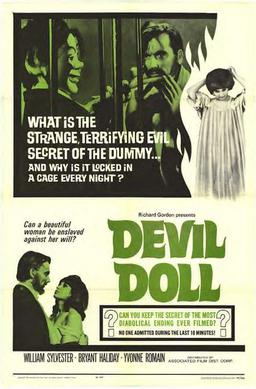
Devil Doll is a 1964 British horror film directed and produced by Lindsay Shonteff and starring Bryant Haliday, William Sylvester and Yvonne Romain. The story is about an evil stage hypnotist and his dummy Hugo.

Slappy the Dummy is a fictional character and a major antagonist in the Goosebumps children's series by R. L. Stine. He is the main antagonist of the Night of the Living Dummy saga and one of the series' most popular villains, as well as its mascot. He is also the main antagonist of the franchise's film adaptation and its sequel, described by their interpretation of Stine as having a "serious Napoleonic complex" in the former. He comes alive when the words, "Karru Marri Odonna Loma Molanu Karrano", which roughly translates to "You and I are one now" and can be found on a sheet of paper in the coat pocket of Slappy's jacket, are read aloud. After being brought to life, Slappy will try to make the person who did so serve him as a slave, to the point of framing them for his evil deeds.

Foolish Wives is a 1922 American erotic silent drama film produced and distributed by Universal Pictures under their Super-Jewel banner and written and directed by Erich von Stroheim. The drama features von Stroheim, Rudolph Christians, Miss DuPont, Maude George, and others.

The Girl from Calgary is a 1932 American pre-Code musical comedy film directed by Phil Whitman, and starring Fifi D'Orsay and Paul Kelly.

His Picture in the Papers is a 1916 American silent comedy film written and directed by John Emerson. Anita Loos also wrote the film's scenario. The film stars Douglas Fairbanks and Loretta Blake and features Erich von Stroheim in a minor role.

The Flying Torpedo is a 1916 American silent drama directed by John B. O'Brien and Christy Cabanne. It was produced by the Fine Arts Film Company and distributed by the Triangle Film Corporation. The film was written by John Emerson, Robert M. Baker and D. W. Griffith. The film is now considered lost.

The Green Temptation is a lost 1922 American silent melodrama film directed by William Desmond Taylor and starring Betty Compson. It was written by Julia Crawford Ivers and Monte Katterjohn based upon the short story "The Noose" by Constance Lindsay Skinner.



















